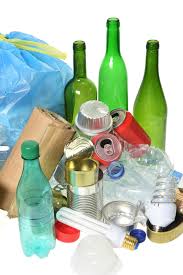
Recycling can save our planet by reducing waste, conserving resources, decreasing pollution, and promoting sustainable practices for future generations.
What is recycling?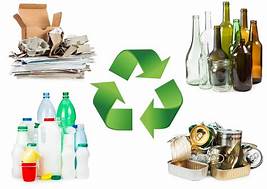
Recycling is the process of converting waste materials into reusable materials through various methods such as sorting, processing, and transforming them into new products.
It aims to reduce the consumption of raw materials, save energy, and reduce the environmental impact of waste disposal by giving discarded materials a new life cycle.
How recycling can save our planet?
Recycling is a process in which materials that would otherwise be discarded as waste are collected, processed, and converted into new products or materials.
The purpose of recycling is to reduce raw material consumption, conserve energy, reduce pollution, and reduce the environmental impact of resource extraction and waste disposal.
Recycling helps conserve natural resources and contributes to a more sustainable and environmentally friendly society.
Here are the key steps in the recycling process that can save our planet:
Collection:
Recyclable substances are accrued from households, businesses, and public places.
This can include items like paper, cardboard, glass, plastic containers, aluminum cans, and electronic waste (e-waste).
Sorting and Processing:
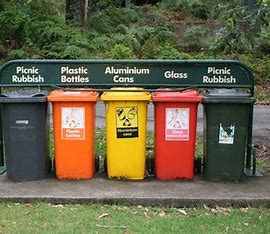
Once collected, recyclables are sorted and separated into different categories to remove contaminants and prepare them for processing.
This step may involve shredding, crushing, or melting the materials.
Manufacturing:
Processed recyclables are then used to manufacture new products or materials.
For example, recycled paper can be turned into new paper products, recycled plastic bottles can be used to make new plastic containers, and recycled aluminum cans can be used to produce new aluminum products.
Distribution:
The recycled products are distributed to consumers, completing the recycling loop.
These products can include recycled paper products, recycled glass containers, and other items made from reclaimed materials.
Recycling has several important benefits that can save our planet:
Conservation of Resources:
Recycling reduces the need for raw materials, conserving natural resources like trees, minerals, and petroleum.
Energy Savings:
The production of new products from recycled materials often requires less energy compared to producing them from virgin materials.
For example, recycling aluminum saves a significant amount of energy compared to mining and refining new aluminum.
Reduction of Pollution:
Recycling can reduce pollution associated with resource extraction, manufacturing, and waste disposal.
It can also help reduce greenhouse gas emissions.
Economic Benefits:
Recycling can create jobs in the collection, processing, and manufacturing of recyclable materials.
It can also save municipalities money by reducing the costs of waste disposal in landfills or incineration.
Extended Product Lifecycles:
Recycling extends the lifecycle of materials and products, reducing the need for disposal and replacement.
Reduced Landfill Use:
Recycling reduces the volume of waste sent to landfills, which helps increase the area of disposal sites.
Individuals, organizations, and governing bodies should participate in recycling programs and work to reduce waste.
Numerous communities have implemented recycling initiatives with instructions on which materials are eligible for recycling and the appropriate methods for preparing them for collection.
Through participating in recycling, we can assist in fostering a more sustainable and eco-friendly future.
What are the types of recycling?
Recycling involves the gathering, treating, and converting materials that would typically be deemed waste into fresh products.
There are several types of recycling, each focused on specific materials and processes.
The main types of recycling include:
Material Recycling:
This is the most prevalent type of recycling and entails collecting and reprocessing substances like paper, cardboard, glass, and different metals such as aluminum and steel.
These materials are often sorted, cleaned, and then used to produce new products of the same type.
For example, recycled paper can be used to make new paper products.
Plastic Recycling:
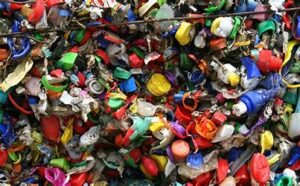
Plastic recycling is a segment of material retrieval that specifically focuses on plastics.
Different types of plastics are often separated and treated to manufacture new plastic goods.
Recycling codes, represented by numbers 1 to 7 inside a triangle of arrows on plastic products, help identify the type of plastic and guide recycling efforts.
Electronic Waste (E-Waste) Recycling:
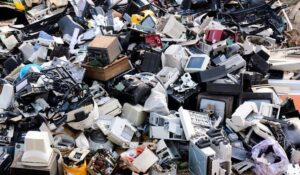
E-waste recycling involves the collection and processing of electronic devices and components, such as computers, cell phones, and televisions.
These products include valuable materials such as precious metals and may also have hazardous substances that require proper management.
Textile Recycling:
Textile recycling focuses on the reprocessing of textiles, including clothing and fabric materials.
Old clothing can be recycled into new textiles or repurposed for various applications.
Organic Waste Recycling:
Organic materials, including food leftovers and garden waste, can be composted to produce nutrient rich fertilizer that enhances soil health for gardening and farming.
Construction and Demolition (C&D) Recycling: C&D recycling involves the recovery of materials from construction and demolition sites, including wood, concrete, metals, and more.
These materials can be reused or recycled for new construction projects.
Paper Recycling:

Paper recycling specifically focuses on the recovery and processing of paper products, including newspapers, magazines, cardboard, and office paper.
Recycled paper can be used to make a wide range of paper products.
Glass Recycling:

Glass recycling involves collecting and reprocessing glass containers like bottles and jars.
The recycled glass can be used to manufacture new glass products or as a raw material in other industries.
Tire Recycling:
Used tires can be recycled to produce various products, including rubberized asphalt, playground surfaces, and fuel.
Battery Recycling:
Battery recycling is crucial for the proper disposal and recovery of valuable materials from used batteries, such as lead-acid batteries, lithium-ion batteries, and more.
Aerosol Can Recycling:
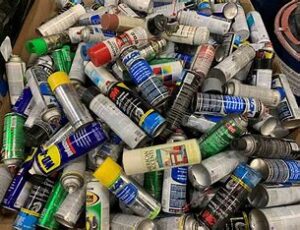
Aerosol cans, often used for products like spray paint and air fresheners, can be recycled to recover both the metal can and any remaining contents.
Hazardous Waste Recycling:
Some hazardous materials can be recycled or processed to reduce their environmental impact.
This includes hazardous waste generated by industrial processes.
Recycling helps conserve natural resources, reduce waste in landfills, and lower energy consumption compared to producing new materials from raw resources.
It also plays a significant role in environmental sustainability and reducing the carbon footprint associated with the production of goods.
Different regions and municipalities may have varying recycling programs and guidelines, so it’s essential to follow local regulations and practices when recycling.
What are the steps of recycling that can save our planet:
The recycling process involves several steps, from collection and sorting to processing and manufacturing.
While specific steps can vary depending on the material being recycled and the recycling program in place, here are the general steps of recycling:
Collection:
The first step in recycling is the collection of recyclable materials from various sources.
This can include curbside collection by municipalities, drop-off recycling centers, or specialized collection services for specific materials like electronic waste.
Sorting:
Once collected, the materials need to be sorted to separate them by type.
This can be done manually or using automated processes like conveyor belts, screens, magnets, and air classifiers. Sorting is essential to ensure that each material stream remains as pure as possible.
Cleaning:
After sorting, the materials may undergo cleaning to remove contaminants, such as dirt, labels, and residual product contents.
For example, recycled paper may be cleaned to remove ink and other impurities.
Shredding and Crushing:
Some recyclable materials, like paper, cardboard, plastic, and glass, are often shredded or crushed into smaller pieces to facilitate processing.
This step increases the surface area and makes it easier to melt, mold, or otherwise transform the materials.
Processing:
Different materials may require various processing methods.
For example:
Melting:
Metals like aluminum and steel are often melted down and then formed into new products.
Remelting and Refining:
Glass can be melted and reshaped into new glass containers.
Chemical Reclamation:
Plastics may undergo chemical processes to break them down into raw materials for manufacturing.
Composting:
Organic materials like food scraps and yard waste can be composted to create nutrient-rich soil amendments.
Manufacturing:
After processing, the recycled materials are used as raw materials in the manufacturing of new products.
For instance, recycled paper can be used to make new paper products, recycled plastic can be used to produce new plastic items, and recycled metal can be used for manufacturing various metal products.
Distribution and Sale:
The newly manufactured products made from recycled materials are distributed and sold to consumers, completing the recycling loop.
Consumer Use and Disposal:
Consumers purchase and use these recycled products. After their useful life, these products may eventually be disposed of, starting the cycle anew.
Education and Awareness:
Promoting recycling awareness and education is an ongoing step in the recycling process.
Educating the public about the importance of recycling and how to properly sort and dispose of recyclables helps improve recycling rates and reduce contamination.
Regulation and Policy:
Government agencies often play a role in regulating recycling programs, setting recycling goals, and implementing policies to encourage recycling and reduce waste generation.
It’s important to note that the effectiveness of recycling depends on various factors, including the availability of recycling infrastructure, public participation, and market demand for recycled materials.
Additionally, recycling programs can vary from one location to another, so it’s essential to follow local guidelines and practices when recycling.
How does recycling improve our climate can save our planet:?
Recycling can have several positive impacts on the environment, including contributing to climate change mitigation in the following ways:
Reduction in Greenhouse Gas Emissions:
Recycling often requires less energy than manufacturing products from raw materials.
For example, recycling aluminum saves a significant amount of energy compared to mining and refining bauxite ore to produce new aluminum.
Similarly, recycling paper and cardboard requires less energy than making paper from wood pulp.
By using less energy in the recycling process, there is a reduction in the greenhouse gas emissions associated with energy production, such as carbon dioxide (CO2) emissions from burning fossil fuels.
Conservation of Natural Resources: Recycling reduces the need for extracting and processing raw materials from the Earth.
This conservation of natural resources, such as forests, minerals, and metals, helps prevent deforestation, habitat destruction, and other environmentally harmful activities associated with resource extraction.
Reduced resource extraction can also lead to lower emissions of greenhouse gases, as many extraction processes are energy-intensive and emit CO2.
Diverting Waste from Landfills:
When materials are recycled, they are diverted from landfills. Landfills are a significant source of methane, a potent greenhouse gas.
When organic materials like food waste and yard waste decompose in landfills without access to oxygen, they produce methane.
By diverting these materials to composting or other recycling processes, methane emissions can be reduced.
Energy Recovery can save our planet:
In some cases, non-recyclable waste materials, such as plastics and certain organic materials, can be used as a source of energy through waste-to-energy (WTE) processes.
While not a form of recycling in the traditional sense, WTE can help reduce the demand for fossil fuels and mitigate greenhouse gas emissions by generating electricity or heat from waste materials that would otherwise be landfilled.
Reduction of Energy-Intensive Manufacturing: When products are made from recycled materials, they often require less energy-intensive manufacturing processes.
For example, manufacturing products from recycled steel or aluminum typically consumes less energy than producing these metals from virgin ores.
This energy savings translates into lower greenhouse gas emissions.
Circular Economy:
Recycling is a key component of a circular economy, where products and materials are designed, produced, and used to reduce waste and extend product lifecycles.
By promoting reuse and recycling, a circular economy can lead to reduced consumption of resources and associated emissions.
It’s important to note that the climate benefits of recycling can vary depending on the material being recycled, the efficiency of recycling processes, and the energy sources used in those processes.
Additionally, recycling should be part of a broader strategy to combat climate change, which may include other measures like energy efficiency improvements, transitioning to renewable energy sources, and reducing overall consumption.
While recycling is a valuable tool for reducing greenhouse gas emissions and addressing environmental concerns, it should be integrated into a comprehensive approach to sustainability and climate change mitigation.
Recycling of certain chemicals that can save our planet?
Recycling of certain chemicals, also known as chemical recycling or advanced recycling, refers to processes that break down and recover valuable materials from waste chemicals or plastic waste, often to produce new chemicals or raw materials.
This approach differs from traditional recycling, which typically involves physical processes like melting, shredding, and reprocessing.
Chemical recycling can have several advantages, including the potential to address challenges associated with difficult-to-recycle plastics and the ability to recover valuable chemicals and reduce waste.
Here are some examples of chemical recycling methods:
Plastic Pyrolysis: Pyrolysis is a thermal decomposition process that breaks down plastics into their constituent hydrocarbon compounds in the absence of oxygen.
This process can produce various products, including pyrolysis oil, which can be used as a feedstock for producing new plastics, fuels, or chemicals.
It has the potential to recycle mixed plastics that are challenging to separate and mechanically recycle.
Depolymerization:
Depolymerization is a chemical process that breaks down polymers into their monomer units.
For example, PET (polyethylene terephthalate) plastic bottles can be depolymerized to recover terephthalic acid and ethylene glycol, which can then be used to produce new PET plastic.
This process can help close the loop on certain plastic materials.
Solvent-Based Recycling:
Some chemical recycling methods use solvents to dissolve plastics and recover valuable components.
This can be particularly useful for recycling plastics that are not easily recyclable through mechanical means.
The recovered materials can be used to produce new plastics or other chemicals.
Gasification: Gasification is a process that converts organic materials, including plastics, into synthesis gas (syngas), which can then be used as a fuel or as a feedstock for the production of chemicals and fuels.
Biological Recycling:
Biological methods, such as biodegradation or enzymatic degradation, can be used to break down certain plastics and chemicals using microorganisms or enzymes.
These processes can be environmentally friendly and may offer sustainable solutions for specific waste streams.
Catalytic Conversion:
Catalytic processes involve using catalysts to facilitate the conversion of waste chemicals into valuable products.
These processes can be applied to various chemicals and plastics to recover useful materials.
It’s important to note that chemical recycling technologies are still evolving, and their commercial viability can vary depending on factors like the type of waste, the quality of the recovered materials, and economic considerations.
Additionally, regulatory and environmental concerns must be addressed to ensure the safety and sustainability of these processes.
Chemical recycling has the potential to complement traditional mechanical recycling and improve the overall recycling ecosystem, particularly for plastics and chemicals that are challenging to recycle through conventional methods.
However, it is essential to conduct thorough assessments of the environmental and economic impacts of these processes to determine their suitability for specific waste streams and applications.







